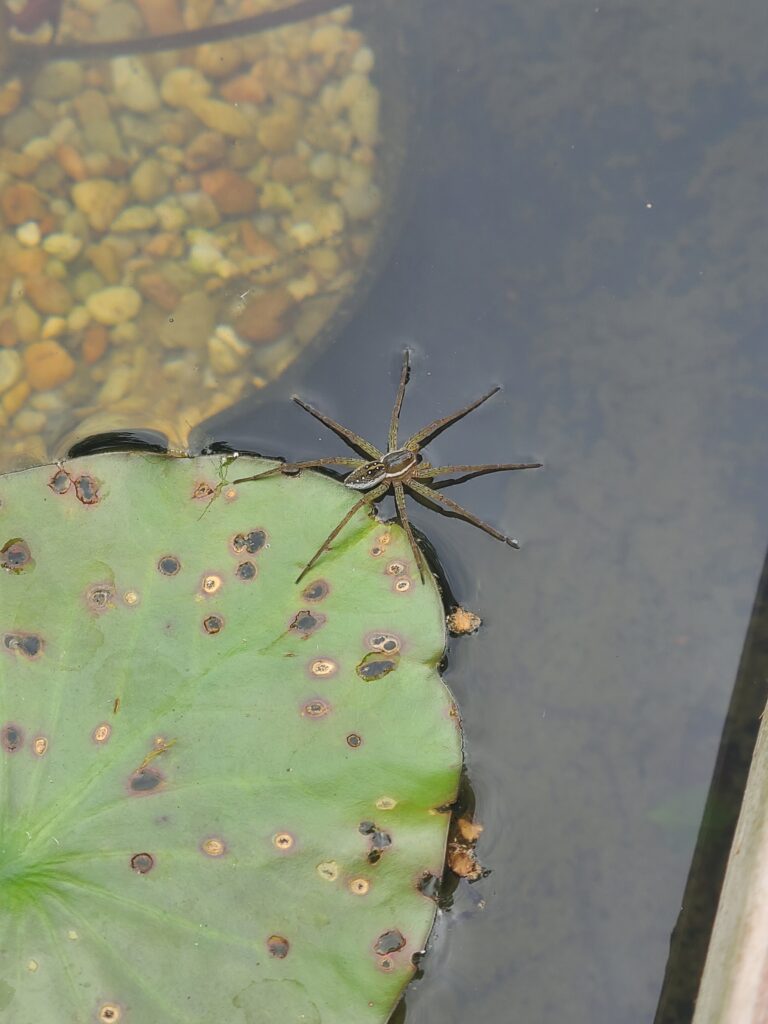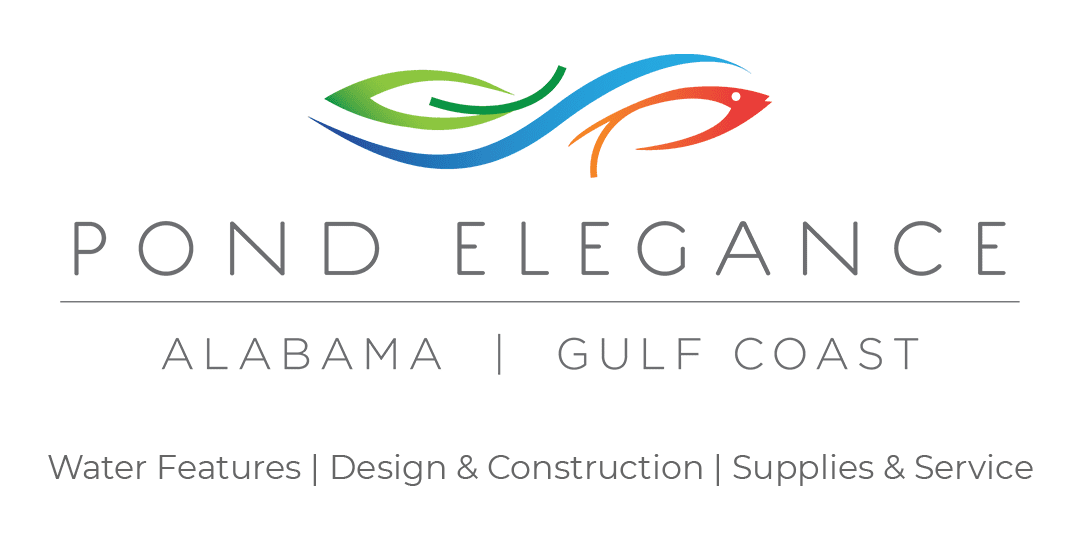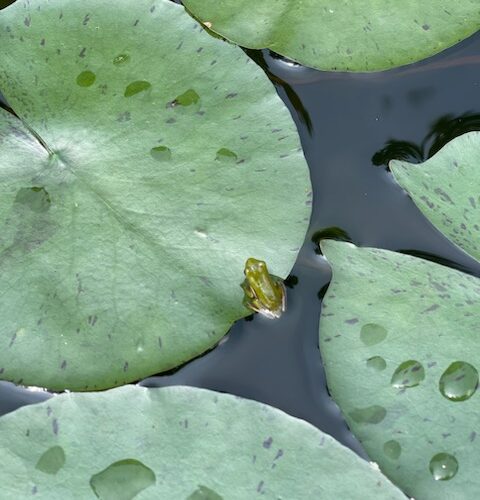
Stewarding a pond has many benefits. People, plants, and wildlife all win when there is a pond built and maintained. A natural pond is a great place to start when becoming a pond owner. They require less machinery and attention than other types of ponds. If you are concerned about the implications of climate change, consider starting a pond in your yard or on a property you manage.
There is a certain kind of pride in being Pond People. We love the environment and in our own way, we work hard to protect it. Climate change is having its way with our weather and deforestation is taking away the habitats necessary to support wildlife.
As pond owners, we are adding to the availability of wetland wildlife habitats. We are also creating space for carbon sequestration. This mitigates the impact of climate change by capturing and storing carbon dioxide from the atmosphere.
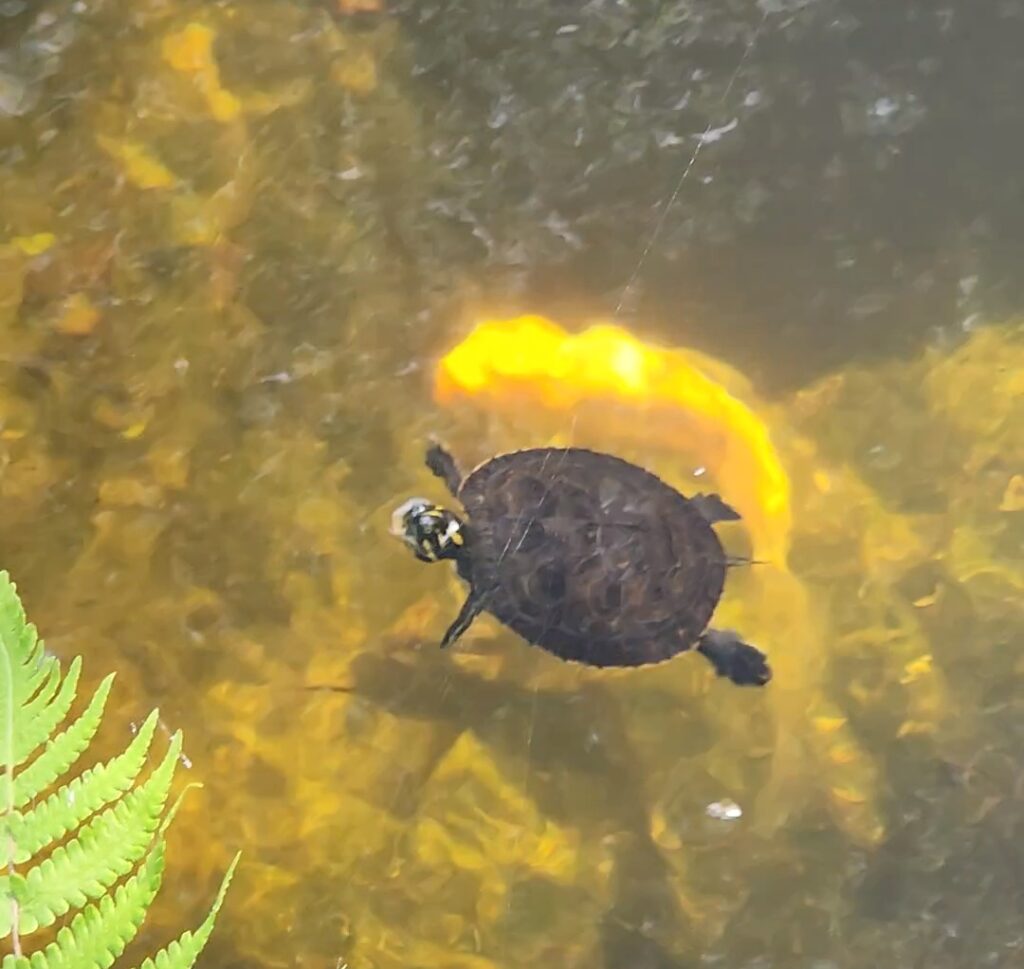
“Building and maintaining a pond requires careful planning.”
Like any landscaping and outdoor project, building and maintaining a pond requires careful planning. Once you begin changing an area’s landscape, you become responsible for its management. When digging a pond, water can become stagnant, breed unwanted insects, and bloom large quantities of algae.
When building a natural pond, it’s important to strive for a balance between all parts of the ecosystem to avoid potential ecological hazards.
Depending on the size of your natural pond, you can also benefit from the cooling effect of the microclimate. The Gulf Coast is experiencing some of the highest temperatures ever recorded. A pond of any size can’t completely solve this problem, but it may alleviate some of the effects. Water takes longer than land to heat up, staying cooler for longer. The area around cool water tends to be milder.
Natural ponds, also known as wild or ecological ponds, are special because of their lack of human intervention. They can form on their own in areas of low-lying depressions. They are typically shallow and surrounded by native vegetation.
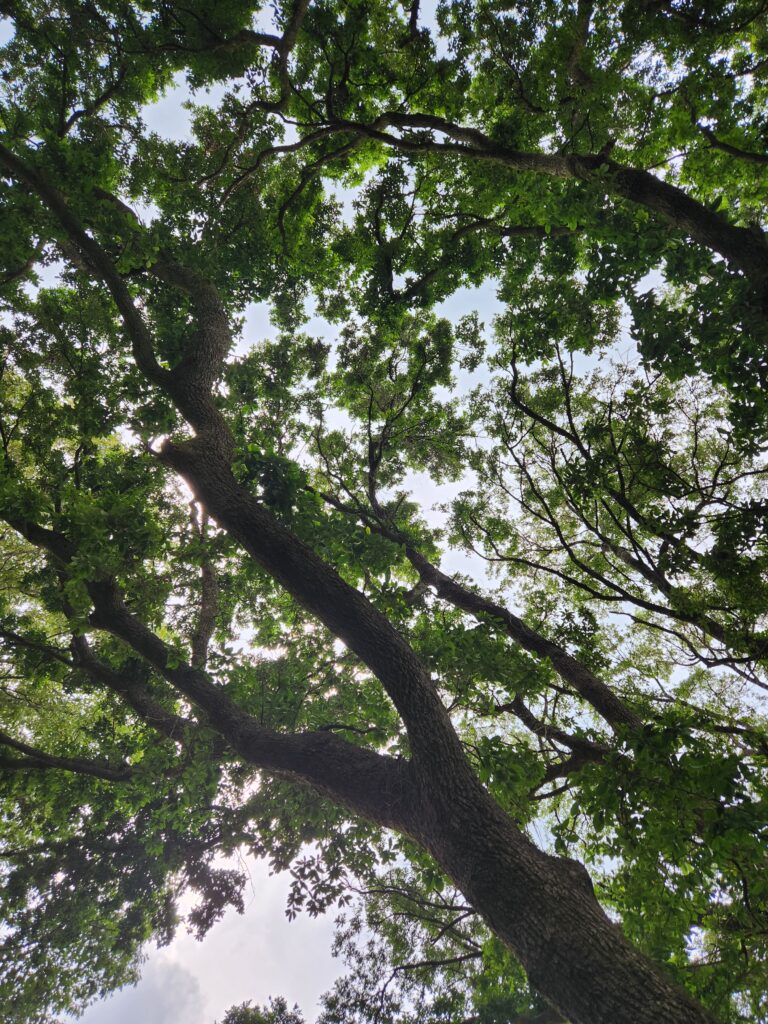
” … the experts at Pond Elegance all agree that two and a half feet of depth is perfect for a DIY pond.”
You can dig your natural pond out by hand or with a machine if you don’t have a naturally occurring low-lying area on your property. The difference between a pond and a lake is the availability of sunlight touching the bottom. For our area, the experts at Pond Elegance all agree that two and a half feet of depth is perfect for a DIY pond.
Unlike wild ponds, your DIY natural pond will require a liner. Size your liner for your pond’s length, width, depth, and overhang for your perimeter. You can use logs, rocks, and other landscape materials to cover your liner’s overhang.
Do be careful about planting native and long-root plants in the ground near your liner. Depending on their growth rate and spacing, your liner can become exposed by the pushing of roots beneath it.
Wild, natural ponds fill from rainwater, groundwater seepage, and seasonal runoff. Their water levels change through the seasons, the amount of rain experienced, as well as sun exposure. They are used by woodland animals to drink from, amphibians to breed in, and are home to some freshwater fish.Â
In contrast, landscape and koi ponds are usually filled by municipal tap water. This type of water has chemicals that are harmful to fish and some plants. If you use this type of water to fill your wild pond, you will need to let it sit for at least 72 hours before adding fish and plants. At this time, the water’s temperatures and chemical levels can adapt. The chlorine and other water treatments will evaporate.
“… consider using a rainwater catchment system to fill your pond.”
When planning your wild pond, consider using a rainwater catchment system to fill your pond. Rain is purer than municipal water. Although it can contain bacteria and minerals, rainwater is the ideal for filling up a pond. Some natural ponds serve the sole purpose of catching rainfall.
These ponds are used in agriculture to store water and create a favorable environment for farmland. Homeowners also use them as water storage.
Regardless of the pond’s formation and water source, the real difference of a wild pond is in the intention of the pond. Plan and design a natural pond with the idea that it is prepared to be ecologically balanced without you. Again, ponds support an array of plants and animals. Natural ponds offer essential habitats for various aquatic species, insects, amphibians, and birds.
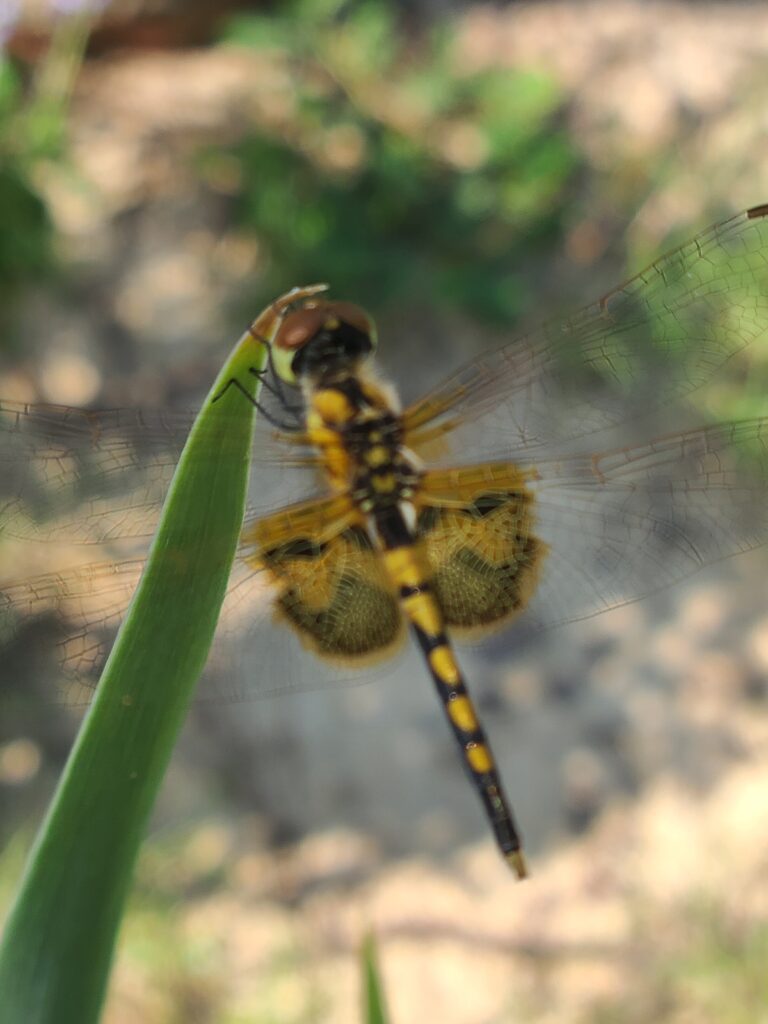
Decorative ponds may lack the same level of biodiversity as natural ponds depending on their filtrations and aeration methods. Also, in these ponds, plant selection and distribution are often limited and may focus on aesthetics rather than ecological considerations.Â
“Natural ponds need a diverse mix of aquatic vegetation and shoreline plants.”
Natural ponds need a diverse mix of aquatic vegetation and shoreline plants. They should be native plants to your specific region. These plants play a crucial role in stabilizing the pond’s banks, providing shelter and nesting areas for wildlife, and improving water quality. They should be used to keep your pond clean and to aerate as well.
Like with any type of pond, aquatic plants play a vital role in naturally filtering the water. Plants like Arrowhead, Cattails, and Taro absorb excess nutrients. These plants feed on the nitrogen and phosphorus left in the water as fish waste. With plants using the excess nutrients, they prevent the growth of excessive algae and maintain water clarity. Additionally, the pond’s substrate, pots, and other submersed objects can provide a surface for beneficial bacteria to break down organic matter.
Remember, the goal of a wild pond is to find the balance between plant, fish, and sun exposure. When you find that balance, oxygen levels are maintained. At night, your pond’s oxygen levels maintain through the natural respiration of your plants.
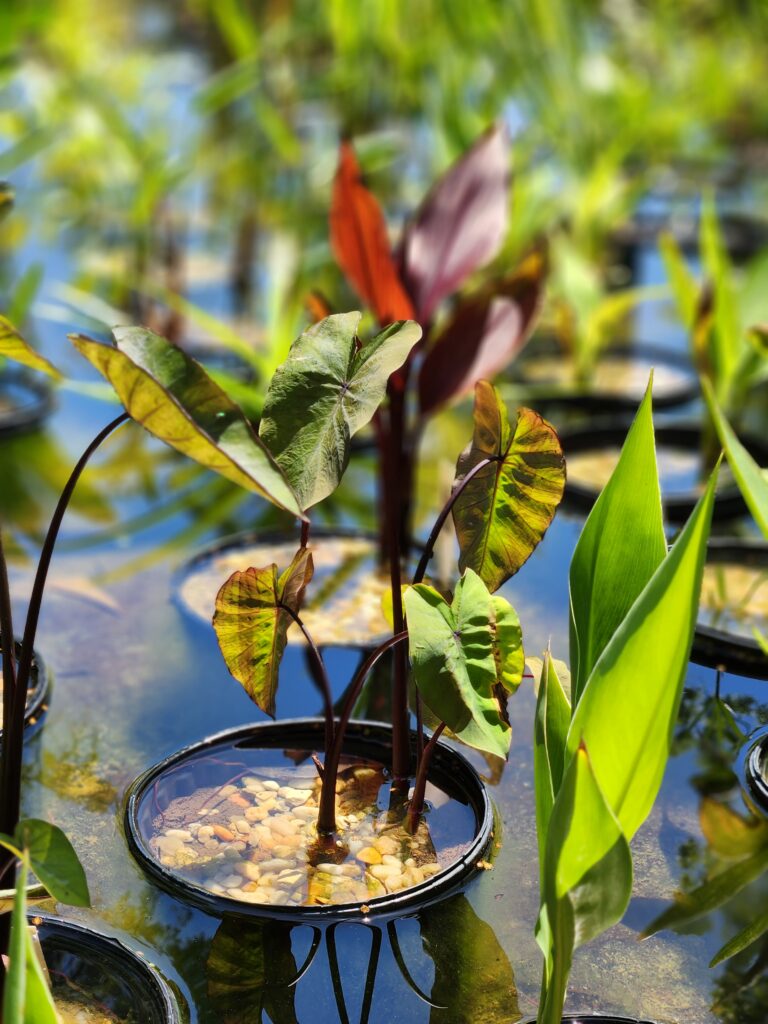
Furthermore, oxygen exchange occurs at the water’s surface. Any movement on your water’s surface is a point for aeration. Dragonflies bouncing from water to air as they eat mosquito larvae? Are ripples forming as your plants dance in the wind? Are your fish weaving through vegetation near the bottom, and forcing stems and stalks to sway back and forth? Your pond is being aerated with each movement. If there is at least one-third of your pond being moved at a time, then you have achieved proper aeration.
“… the goal of a wild pond is to find the balance between plant, fish, and sun exposure.”
Designing and maintaining a natural pond in your own yard can be a rewarding endeavor that supports your local environment and adds a touch of wild beauty to your property. Depending on the size and depth of your pond, you should consider stocking your pond with game fish. Homesteaders raise certain game fish as a food source as well as ecological maintenance.
Get started with the help of the professionals at Pond Elegance of Mobile, Alabama. Larger, deeper ponds require a touch of experience and professionalism. The fine folks at Pond Elegance have been building and maintaining ponds throughout the Gulf Coast for more than 30 years. They are able to create tropical-like paradises as well as large-area stock ponds.
If you are going the DIY route, it all starts with proper planning. Before digging in your yard, call your local authorities using the 811 service to determine where utility lines may be running underground.
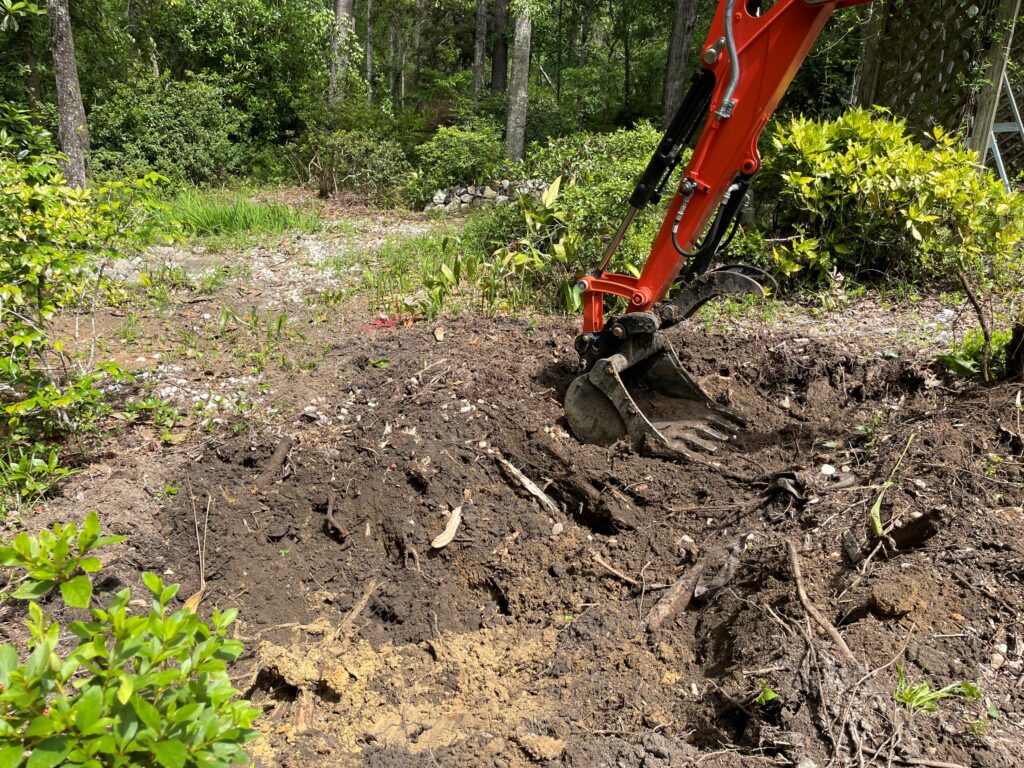
Next, choose a spot with six to eight hours of sunlight daily. You want enough sunlight for plants and fish to thrive, but not so much that your water is overexposed. Ideally, your pond will be exposed to morning sun, and partially to fully shaded in the afternoon.
Then, design the shape of your pond based on the area you have chosen.
Next, consider how you will fill your pond. You may want to start harvesting the rainwater from your roof using barrels or a large tank. You can also arrange for special water deliveries in your area.
“Add both shallow and deeper areas in your design.”
Now you can start digging. You decide what tools you will need based on the size and scope of your project. If you are going deeper than three feet and wider than 10 feet, consider renting a miniature excavator. Remember to add both shallow and deeper areas in your design. You will need shelves for your plants. You will also need refuge from heat and cold for your fish.
After your design is complete and your hole is about done being dug, you will need to purchase a liner of at least 45 mils. If you have heavy clay-like soil, you may not need a liner. Consult with a professional if you are unsure of your land’s water retention abilities.
Liners are pulled taut and made flat by strategically filling the hole with water on top of the liner as you spread it out. You should have designed gentle slopes with varying plant shelf levels, so use large rocks and stones to keep your edge intact.
Now you are ready to completely fill your pond with water. If you intend to let it fill with rain water, you must first add enough water to spread the liners, as well as a base for evaporation. Remember, chlorine needs at least 72 hours to evaporate. Don’t add any fish or plants to your pond until you are sure the water temperature and chemical makeup can support aquatic life.
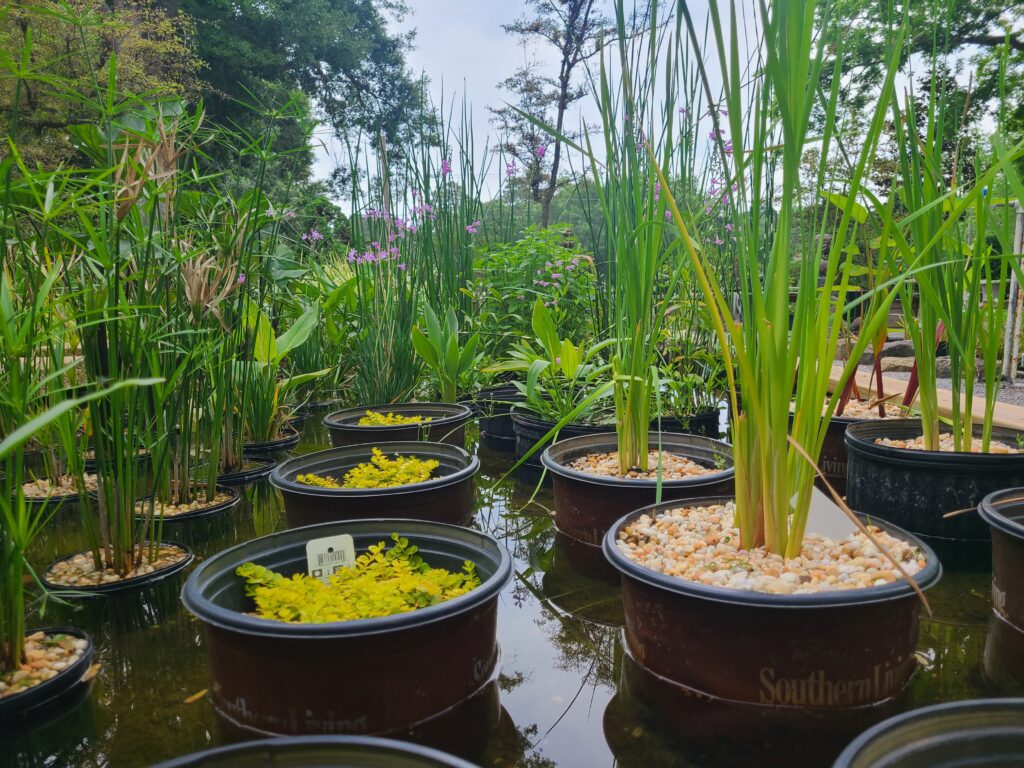
“Chlorine needs at least 72 hours to evaporate.”
Then, add your plants around the edging as well as in the water. Use plants native to your area to attract wildlife. Soon your little ecosystem will start to establish itself. Insects, frogs, turtles, and other creatures will make their way to your water’s edges. Hopefully, you have sloped them for easier access. Over time, they will all colonize the pond.
After your pond is fully vegetated, add your fish. Koi and goldish require 100 gallons per fish, so stock accordingly. If you aim to maintain game fish, know their pond size and depth requirements to ensure they thrive and survive in your pond’s ecosystem.
Finally, keep an eye on your pond. You don’t have to do regular cleaning and chemical maintenance, but be aware of larger debris that may fall during storms. Clean excessive debris if you feel there is an imbalance of algae growing in your pond. You can also test your pond water seasonally to ensure you are maintaining a safe and inviting balance.
Always consider the safety of you, your children, and your pets when living with a pond or visiting one. Use appropriate fencing, signage, and netting to prevent accidents. Also, be aware of the predators that may find your wild pond inviting as well.
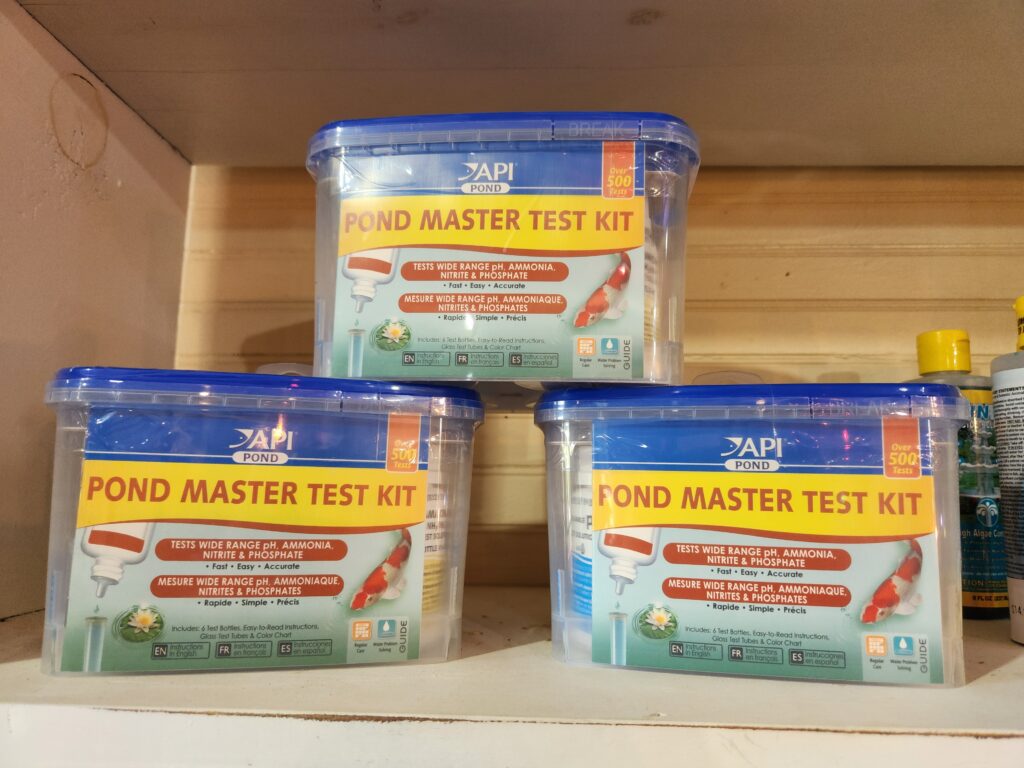
” Test your pond water seasonally.”
Building and maintaining a natural pond may require less ongoing attention than other ponds, but you should still monitor your water. The reward of stewarding a thriving natural pond is a beautiful and biodiverse addition to your property.
Be patient, as it may take some time for the ecosystem to establish itself fully. And remember, a well-balanced and thriving pond will attract a variety of wildlife, including birds, frogs, and beneficial insects, creating a miniature refuge in your backyard.
If DIY isn’t your idea of getting the pond of your dreams, or if your project idea is bigger than you can handle, call Tammie at Pond Elegance to get a professional consultation on your property.
